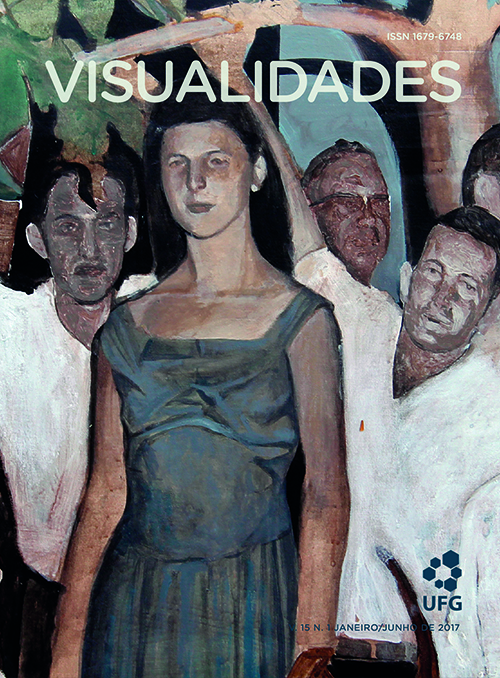O corpo feminino, o movimento e a fluidez: as ninfas em Victor Meirelles e Pedro Américo
DOI:
https://doi.org/10.5216/vis.v15i1.45086Keywords:
Image, Feminine body, NymphAbstract
This research approaches the female body construction in the nineteenth century in the Brazilian painting. The study aims to problematize the female bodies formulated from the parameters of the newly established Academy of Arts in Brazil in dialogue with the theoretical questions elaborated by Aby Warburg and Didi-Huberman - the nymph, with emphasis. Aby Warburg presents the Nymph particularly in his doctoral thesis, in his writings on Domenico Ghirlandaio and in his Atlas Mnemosyne. The nymph will be mainly analyzed in the paintings of outstanding eighteenth-century Brazilian painters, such as Victor Meirelles and Pedro Américo.
Downloads
Downloads
Published
How to Cite
Issue
Section
License

This work is licensed under a Creative Commons Attribution 4.0 International License .
Authors who publish in this journal agree to the following terms:
a. Authors retain the copyright and grant the journal the right of first publication, with the work simultaneously licensed under the Creative Commons Attribution 4.0 License which allows the sharing of work with acknowledgment of authorship and initial publication in this journal.
b. Authors are authorized to take additional contracts separately, for non-exclusive distribution of the version of the work published in this journal (eg publish in institutional repository or as a book chapter), with acknowledgment of authorship and initial publication in this journal.
c. Authors are allowed to publish and distribute their work online (eg in institutional repositories or on their personal page) after the initial publication in this journal, as this can generate productive changes, as well as increase the impact and citation of the published work ( See The Effect of Free Access).
Every effort has been made to identify and credit the rights holders of the published images. If you have rights to any of these images and have not been correctly identified, please contact the Visuals magazine and we will publish the correction in one of the next issues.






